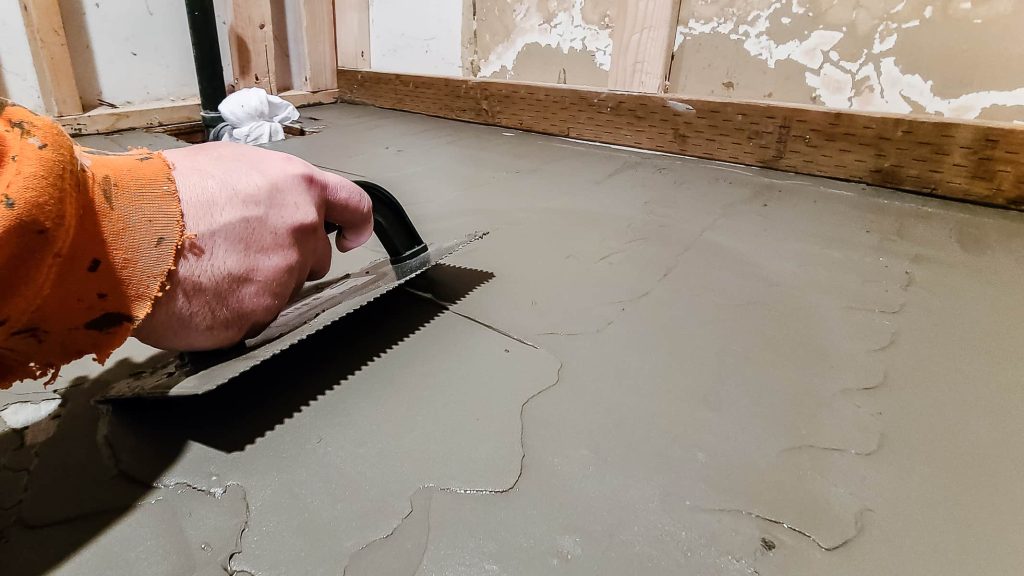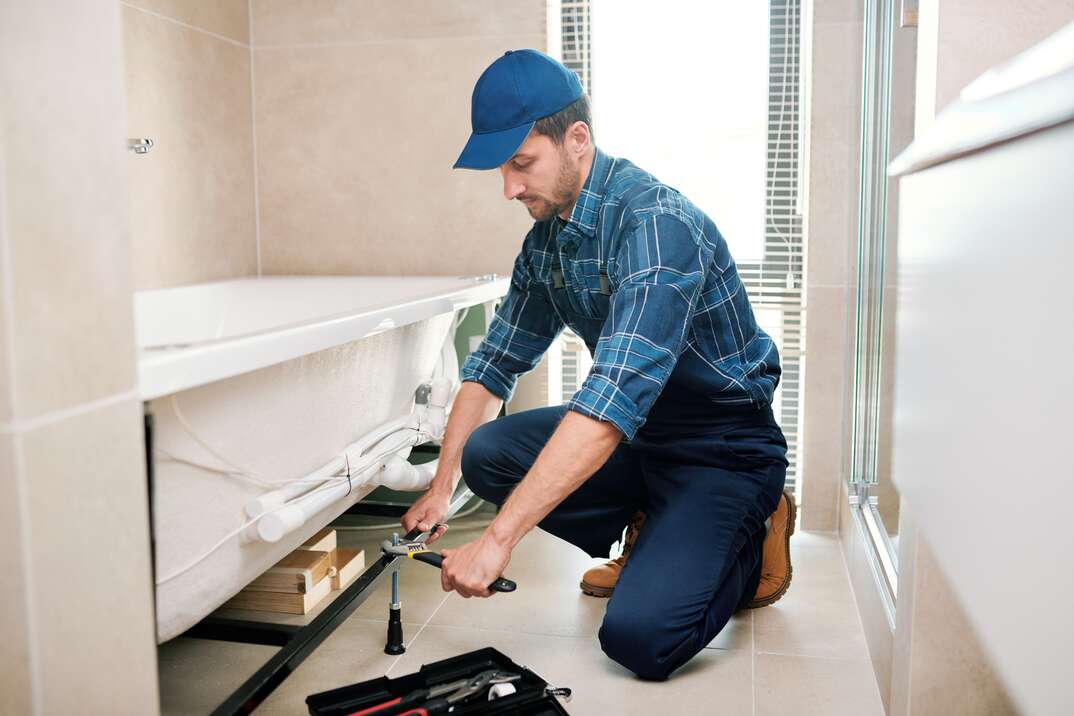Setting up A Bathtub
Setting up A Bathtub
Blog Article
Just how do you feel on the subject of A Step-by-Step Guide to Installing a Bathtub?

Mounting a bath tub isn't precisely rocket science, but it does require strong plumbing, woodworking, as well as often, tiling skills. Changing an old tub with a new one is also a reasonably tough job. If the old tub is readily obtainable, the job can move quickly; if you need to open up a wall to remove the old bathtub as well as position the brand-new bath tub, the task is much harder. In either instance, the job is within a home handyman's abilities, although you will certainly need a helper to vacate the old bathtub and embeded in the new one. See to it you have certified on your own for the job and also fit attempting it. As opposed to employing a contractor to take control of a halfway-completed project, it is far better to think about employing one prior to you begin. Opportunities are you might need a specialist plumber to make tube connections.
This write-up will help you set up a new bath tub in your restroom if you have actually already bought a brand-new tub as well as don't require to change the setup of your previous supply of water pipelines.
Your tools and also material list ought to consist of the following:
Getting ready for the Installment
First of all, the sustaining frame provided with the bath must be fitted (if called for) according to the producer's guidelines. Next, fit the faucets or mixer to the bathtub. When fitting the faucet block, it is essential to see to it that if the tap includes a plastic washing machine, it is fitted between the bathroom and also the taps. On a plastic bathroom, it is additionally practical to fit a sustaining plate under the taps system to stop strain on the tub.
Fit the adaptable tap ports to the bottom of both taps utilizing 2 nuts and also olives (sometimes supplied with the tub). Fit the plug-hole electrical outlet by smearing mastic filler round the sink electrical outlet hole, and after that pass the electrical outlet via the hole in the bath. Utilize the nut provided by the supplier to fit the plug-hole. Examine the plug-hole outlet for an inlet on the side for the overflow pipe.
Next off, fit completion of the flexible overflow pipe to the overflow electrical outlet. Afterwards, screw the pipeline to the overflow face which should be fitted inside the bath. Make certain you utilize every one of the provided washers.
Connect the trap to the bottom of the waste electrical outlet on the bath tub by winding the string of the waste outlet with silicone mastic or PTFE tape, and screw on the trap to the outlet. Link all-time low of the overflow tube in a comparable manner.The bathroom should now prepare to be suited its last placement.
Removing Old Taps
If you need to replace old taps with new ones as a part of your setup, after that the first thing you need to do is separate the water supply. After doing so, turn on the taps to drain any type of water staying in the system. The procedure of eliminating the existing faucets can be quite bothersome as a result of the limited accessibility that is often the case.
Use a basin wrench (crowsfoot spanner) or a tap tool to undo the nut that connects the supply pipes to the taps. Have a cloth ready for the remaining water that will certainly originate from the pipelines. When the supply pipes have been gotten rid of, use the exact same tool to loosen up the nut that holds the faucets onto the bath/basin. You will need to stop the single taps from turning during this procedure. Once the taps have actually been removed, the holes in the bath/basin will certainly have to be cleaned of any type of old securing substance.
Before proceeding to fit the brand-new faucets, contrast the pipeline connections on the old faucets to the new taps. If the old taps are longer than the new faucets, after that a shank adapter is needed for the brand-new faucets to fit.
Mounting the Bath tub
Making use of both wood boards under its feet, put the tub in the needed setting. The wooden boards are useful in evenly spreading the weight of the bathtub over the area of the boards as opposed to concentrating all the weight onto 4 tiny factors.
The next goal is to ensure that the bathtub is leveled all round. This can be attained by examining the level as well as changing the feet on the bathtub until the level reviews degree.
To set up taps, fit the bottom of the outermost adaptable faucet connector to the appropriate supply pipeline by making a compression sign up with; after that do the exact same for the other faucet.
Activate the water system as well as examine all joints and also brand-new pipework for leakages and also tighten them if needed. Fill up the bathtub as well as likewise inspect the overflow outlet and also the regular outlet for leaks.
Ultimately, take care of the bath paneling as described in the supplier's user's manual. Tiling as well as sealing around the tub must wait until the bathtub has been used at least when as this will resolve it right into its final placement.
Fitting New Taps
If the tails of the brand-new taps are plastic, after that you will certainly need a plastic adapter to avoid damage to the string. One end of the connector fits on the plastic tail of the faucet as well as the other end gives a connection to the existent supply pipelines.
If you need to fit a monobloc, after that you will certainly require lowering couplers, which links the 10mm pipeline of the monobloc to the common 15mm supply pipe.
Next off, position the faucet in the installing opening in the bath/basin ensuring that the washing machines are in location between the faucet and the sink. Safeguard the tap in position with the producer given backnut. When the faucet is securely in place, the supply pipelines can be connected to the tails of the taps. The taps can either be connected by using corrugated copper piping or with regular tap adapters. The former kind should be attached to the tap ends initially, tightening up only by hand. The supply pipelines can later be attached to the other end. Tighten up both ends with a spanner after both ends have been attached.
Tiling Around the Tub
In the location where the bathroom meets the ceramic tile, it is essential to seal the joins with a silicone rubber caulking. This is very important as the installation can move sufficient to crack a stiff seal, creating the water to penetrate the wall surface in between the bath as well as the tiling, bring about problems with wetness and also possible leaks to the ceiling listed below.
You can choose from a variety of coloured sealants to assimilate your components and fittings. They are marketed in tubes and cartridges, and are capable of securing voids up to a width of 3mm (1/8 inch). If you have a bigger void to load, you can load it with twists of soaked paper or soft rope. Bear in mind to constantly load the bathtub with water prior to securing, to enable the activity experienced when the tub is in usage. The sealant can break rather very early if you do not think about this activity prior to sealing.
Additionally, ceramic coving or quadrant ceramic tiles can be made use of to edge the bath or shower tray. Plastic strips of coving, which are easy to use as well as reduce to size, are also quickly readily available on the market. It is recommended to fit the ceramic tiles making use of water-resistant or water resistant adhesive and grout.
Bathtub Installation
How Important Is A Bathtub To Your Home?
High-quality baths, showers, and other bathroom updates are necessary when considering a smart investment in your home. It’s a room that you go to every day and one that is constantly being used by guests.The bathroom is one of the top trafficked rooms in a home and also one of the most valuable in terms of home resale.
Install Piping Before Tub
You will be using your existing drain and waste vent system, but pipes required include the hot and cold water supply lines and a pipe leading to a shower head. A mixing valve and shower head are also needed. Air chambers may be required.
Position the Tub
Lower the tub into place so that the continuous flange fits against the wall studs and rests on 1’x4' or 2’x4' supports. Anchor the tub to the enclosure with nails or screws inserted through the flanges into the studs.
NOTE: Remember, bathtubs and shower stalls may require support framing. A bathtub filled with water is extremely heavy, so check building codes and framing support before installing the tub.
Assemble Drain Connections
Assemble the bathtub drain connections by connecting the tub overflow with the tub drain above the trap, not beyond it. The trap will have a compression fitting that screws over the arm of the overflow assembly.
Place a Pipe For the Shower Head
First, locate a brass female threaded winged fitting and attach it to a framing support via a screw or a nail. Then run a pipe up the wall for the shower head. Sweat or solder the other side of the brass fitting to the top of the pipe.
Attaching Hot and Cold Water Lines
Attach your water lines for both hot and cold by sweating these directly into the hot and cold ports of the mixing valve. The mixing valve will be how water enters the tub’s system, not by the pipes themselves.
Install the Spout
Extend a piece of 1/2 inch pipe, or whichever length is specified in the manufacturer’s instructions, for the tub spout. Sweat on a male threaded fitting at the end of the pipe or use a brass nipple of the proper length and a 1/2 inch cap.
NOTE: At this point you should have your rough-in plumbing work inspected before proceeding further.
Check For Leaks
Restore the water pressure and check the drain connection and the supply pipes for any sign of leaking.
estore the Bathroom Wall
Replace the wall with moisture-resistant drywall as a base for your wall covering. Seal the joints between the wall and your new tub with silicone caulk as protection against water seepage.
https://www.berkeys.com/2016/12/02/bathtub-installation-dallas/

I'm very fascinated by How to Install a Bathtub: Install an Acrylic Tub and Tub Surround and I am assuming you liked my blog entry. Are you aware of another individual who is occupied with the niche? Why not share it. Thanks for your time spent reading it.
Go Services
Report this page